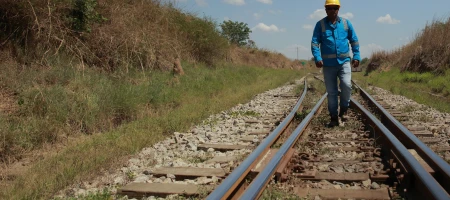
By Mario Valencia
Mario Valencia is economic analyst and professor of economics at Universidad Nacional de Colombia and Colegio de Estudios Superiores en Administración, CESA.
Coal, but for how long?
Colombia is not a large coal consumer for two main reasons: the country has a large share of hydroelectric power in total energy consumption and its productive apparatus does not demand much energy.
Nevertheless, Colombia has large coal reserves. There are an estimated 16,000 million tons available, which would be sufficient for about 180 years.
However, this natural wealth is both an opportunity and a curse. Chances are that in less than a century, the world will no longer consume coal as an energy source. Consequently, one of the questions will be: What will happen to the coal economy?
The Colombian economy is currently highly dependent on mining industry, especially on coal. It represents more than half of the mining GDP. It has created almost 100,000 jobs in the country.
Replacing it will not be easy or cheap. That's the reason why any future development plan must consider all fiscal and social aspects, as well as the environmental ones.
A radical position in the climate debate is that the only impact that must be stopped is the environmental one. It's clear that the catastrophic environmental damage is an essential cause for concern.
But how do you replace the profits, utilities, and wages generated? Shutting down the mines might be contributing significantly in reducing the greenhouse gas emissions into the atmosphere. But it could exacerbate poverty and unemployment.
The sensible thing to do would be to think of a transition plan that considers the following elements:

A better way of harnessing the mining income currently generated.
This means more state tax and royalty payments. At least three reforms in this field should be considered:
- an income surcharge for multinational mining companies;
- the elimination of all tax exemptions and benefits; and
- royalties must constitute a special fund for public investment in the energy transition.
With the aforementioned, two key elements are guaranteed: maintaining resources for public finances and having financing to invest in activities that reduce coal dependency.
Education and training for people from regions highly dependent on the extraction of natural resources.
These investments as a result of the reforms should be oriented towards: education and training for people from regions highly dependent on the extraction of natural resources. The aim of all of it is to increase capacities of workers in industrial transformation areas
“El Sena” is an indispensable institution in this field, which must be rescued from politicking and be put at the service of industrialization.
Transforming companies
At the same time, transforming companies – and new processes aimed to increase technology – must receive public incentives so as not to disappear (those that already exist) and create new ones. In the developed world, the industrialization process has followed some common parameters, public investment in projects or companies, for example. As for Colombia, the government's speech on energy transition should move forward towards the investment of resources in all activities chosen for this purpose.
To hastily end the coal industry is to throw thousands of families that depend on this economy back into poverty. A more logical path is to initiate a process that starts from the current situation, with a greater benefit from its wealth, going through improving the efficiency of public spending and the tax, social, and environmental demands of the actors, until reaching an activity that no longer depends on coal. To think about a rigorous plan will be the task in which trade union organizations and social movements must articulate with academia, unions, and the government as a whole..
Publication date 12 10 2021
